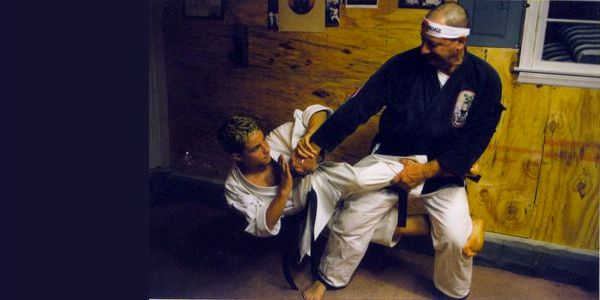It isn’t often that I receive an email from a Sensei who wants to let me know how proud he is of his student. Recently I received such an email from Daniel Vena, Sensei, and he said, “Greg is my first Black Belt and now serving as my Dai Ichi. It would be a great honor to recognize his extraordinary commitment to the Martial Arts Community on your web site.” So, today we are recognizing Gregory Melita, Dai Ichi, Yon Dan, 4th Degree Black Belt with this interview. Greg is 28 years old and is part of Ed McGrath’s School of Isshin Ryu Karatedo and Kobudo. He teaches in New York.
When did you first start training in martial arts and where?
I started training in Isshinryu in 1998 at the age of 14 in Long Island, NY. Since I was nine years old my passion had always been Motocross. That will always be the sport that I did in my childhood and I will continue to enjoy it as a hobby. Once I started in the martial arts, I knew it would be something I would pursue for a long time.
What style of martial art did you study?
GM: My first style was Isshinryu Karate.
Who did you study with and what was it like training there?
Daniel Vena is my Sensei / Teacher and the training experience was very unique to say the least. Sensei Vena is a close family friend of my parents before I started training with him in Isshinryu Karate. He was trained under his father in law Ed McGrath. My father had studied with Master McGrath very shortly when he was younger because Master McGrath was a neighbor to my Grandparents. So when I showed interest in the martial arts, he knew to call Sensei Vena and my training started from there. My lineage in Isshinryu is Don Nagle, Ed McGrath, Dan Vena, and myself. I was fourteen years old when I started. Not only was the training on an intense one on one basis with Sensei Vena, but everything was as detailed as you could get. The Ippon Kumite and the Sparring was very intense and realistic, with nothing held back. And by “nothing held back”, I mean the techniques were always thrown with full force in a live environment. There was nothing held back with the teaching as well. There were no secrets. I believe this is truly why I excelled so fast and why my foundation in Karate is so strong.
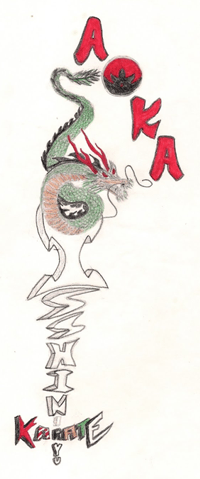
We trained almost every day of the week and fought every night. Karate was my obsession. The first dojo that Sensei Vena took me to when starting my training was Sensei Frank Black’s home dojo in Smithtown. This was a no-nonsense environment with Sensei Black’s students being ferocious fighters. Most of the students were there to learn to fight in real situations be it on the street or while on the job. I was one of the youngest in the room. Sensei Black was another one of Ed McGrath’s students, and his instruction was to the point, and very realistic. I got most of my sparring experiences at this dojo, and those were some of the most hard-hitting matches I’ve ever had. That was the first time I experienced such great camaraderie amongst guys who were kicking the crap out of each other. The other instructors I attribute my Karate to are Frank Klos, Steve DiLorenzo, John Pinghero and Lee Snyder. I am now Sensei Vena’s Dai Ichi.
Did your teacher teach the use of weapons?
GM: Yes there was weapon instruction based on the Kobudo Katas in the Isshinryu System. Bo, Sai, Nunchaku, and Tonfa.
Did your teacher ever tell stories of his teacher and training when he first started?
GM: There were countless stories of his training and experiences under his sensei and another family friend of ours, Grand Master Ed McGrath. From the stories of Master McGrath’s training under the late Don Nagle in the Marine Corps, to the stories of his own training. I feel lucky to have been in the presence of such great Karate legends like Don Nagle, Ed McGrath, Frank Klos, John Pinghero, Steve DiLorenzo, Frank Black, and Ralph Passero.
How long did it take you to get your black belt?
GM: I started in 1998 and I received Sho-Dan on May 16th, 2001.
I am currently Yon-Dan, 4th degree black belt.
Who were your peers in training during this time, and of your peers, who made Karate a life long Journey?
GM: I am very proud to have had most of my close personal friends involved with my martial arts training at some point, whether they decided to stay with it or not. Some of them have trained in Isshinryu with me and some of them have trained in BJJ with me. I know for a fact that each one of them got something out of it, and if nothing else, they appreciate my training and dedication even more because they experienced it firsthand. Those friends include Christopher Witham, Jarett Dilorenzo, Dan Marfino, Nick D’Amico and Joe Richter. As far as the Karate peers that I came through the ranks with in Isshinryu, I know that most of Sensei Black’s students have made karate a life long journey.
Have you ever trained in another system of martial arts, and what was that experience like compared to the original style you studied?
GM: I have trained in other arts besides Isshinryu. These include Aikido, Jeet Kune Do, Wrestling, Muay Thai, Kali, Escrima, and Judo. The style that I have been dedicated to the MOST besides Isshinryu is Brazilian Jiu Jitsu. I have been training BJJ since 2003 under the Kioto system founded by Grand Master Francisco Mansor. My instructor is 4th Degree Black Belt Milton Regis. I have achieved Brown Belt 3rd degree in BJJ so far.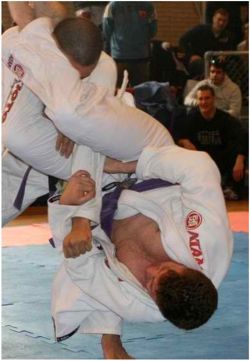
Where did you open up your first dojo, and what was the experience like going from student to teacher?
GM: The first dojo was in Patchogue, Long Island along with Sensei Vena and Sensei DiLorenzo. That was an amazing experience, because one of the things I feel I do very well is the explanation of the techniques. I can break it down really well for the student to understand while not over complicating things. I’m a visual learner with a great understanding of body mechanics. I use this in my teaching because it’s the exact way that I learned. I saw a technique, broke it down in my mind, and applied it using my body mechanics.
Did you ever participate in tournaments, and if not, why didn’t you?
I participated in tournaments from Green Belt up to Black Belt, winning the Al Smith’s Red Dragon Kumite championship, and the Kumite championship at Don Nagle’s Isshinryu Tourament.
What were tournaments like back when you first started participating in them?
GM: Karate Tournaments were very different from the training that I did in the Dojo. Even though I had fun, I did not like competing in the point fighting style very much. Even though I won on numerous occasions, I found it very unrealistic and watered down compared to our training in the Dojo. Especially because of all of the stories that I heard from the “old days” of karate tournaments where techniques weren’t “pulled” and there was barely any protection used.
How do you think that tournament sparring has affected modern day Karate? Has it had a negative impact or a positive impact?
GM: In general, I believe the tournament scene is a good experience for all Karate-Ka. It enables the student to compete against new people, and enables the community to get together. It all depends on YOUR goal as a student. If you are looking to be involved with something to stay in shape, have fun and learn the art, then tournament sparring is fine. If your goal is to learn how to truly defend yourself in a street situation or compete in full contact or MMA, then you have to take tournament sparring for what it is: A “safe” way to spar and have a friendly gathering of Karate-Ka and have fun. Don’t confuse tournament sparring as being realistic or practical. Too many people try to justify it as defining Karate as a whole.
What would you like to see done differently in tournaments?
GM: I would like to see less political controversy.
What do you think separates the style you train in from other arts? For example, if you train in Isshinryu Karate, how would you compare it to a style like Shotokan?
GM: The difference in the Isshinryu Karate that I learned from my lineage is the reliance on speed, retraction, deception, and accuracy with deadly effectiveness while always keeping the street defense mentality in mind.
What advice would you give beginners and advanced practitioners in regards to practicing kata?
GM: Kata simultaneously teaches body mechanics, sound form, and muscle memory. To the new student I would say that Kata training would give you the foundation you need to excel.
What is your favorite kata, and why?
GM: My favorite is Sunsu because of the dynamic movements and its exclusiveness to Isshinryu.
If you could only learn and teach one kata, what would it be and why?
GM: Sei-San, because it is the foundational kata and teaches everything the student needs to know in basic form.
Why is kata training important to the karate-ka?
GM: It is important because it not only engrains the proper form into muscle memory, but it enables you to train on your own, anytime, anywhere.
Did your teacher instruct you in bunkai, and if so, what kata’s?
GM: Bunkai was taught with every Kata in the Isshinryu System. In addition, the bunkai that was taught led to other ideas and creative innovation to different situations. We would expand on known bunkai and come up with different ideas about dealing with certain attacks.
What is your favorite traditional martial art weapon and why? Ex: Staff, Sword, Sai,…etc.
GM: I like the staff, particularly because of its real world use. There are a lot of objects in today’s society that resemble the shape of the staff and could therefore be used in real situations.
Compared to how you were trained, how does your current Karate training differ from when you first started?
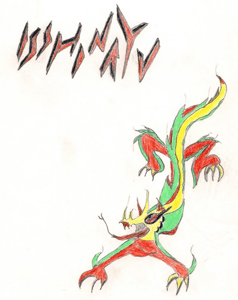 GM: It is different now in that I incorporate all of the things I have learned over the years from different styles and types of training. One thing that I see as a flaw in traditional martial arts is that they break down techniques so far that they lose the sense of reality. Most of the time they are standing still and everything is moving too slowly to be real. This then causes the technique to fail in combat. You have to keep the big picture in mind and always account for resistance, and stress.
GM: It is different now in that I incorporate all of the things I have learned over the years from different styles and types of training. One thing that I see as a flaw in traditional martial arts is that they break down techniques so far that they lose the sense of reality. Most of the time they are standing still and everything is moving too slowly to be real. This then causes the technique to fail in combat. You have to keep the big picture in mind and always account for resistance, and stress.
Is there anything that you have added or contributed to the art you study? Or do you teach strictly as you were taught and if so why?
GM: I like to teach strictly as taught to preserve the style. From there the student can apply his or her own individuality. Everyone is different and unique in their expression of the art that they learned. Too many people try to combine styles and come up with the “ultimate style” or take techniques from different styles and fuse them into one. The truth is that there are certain techniques that are useful in different situations. Train in the pure forms of different styles, keeping resistance and movement in mind, and use the techniques that are necessary for the situation that you’re in.
What would be one thing that is most overlooked in the style you study and why do you think it deserves attention?
GM: I think that if you are closed minded to one style, then you will ultimately fail as a martial artist, especially if your goal is to be ready for anything. Because the main two styles that I have put the most time into studying is Isshinryu and Brazilian Jiu Jitsu/MMA, the issue of ground combat needs to be addressed. In traditional Karate, the argument is that you don’t want to be on the ground ever, whether it be because of multiple opponents or because of the hard ground. It is my contention that if you wind up on the ground as a Karate Ka, it wasn’t your choice. You are more likely to end up on the ground in a real situation if you DON’T study BJJ. I believe that since I have been training in BJJ for so long, I am more likely to remain standing in a real situation than someone who has little to no training in BJJ. This enables me to utilize my Isshinryu more effectively. Secondly, in a situation with multiple attackers that have bad intentions, you will MOST LIKELY wind up on the ground no matter what kind of training you have. Be open-minded. I’ve always said that what Helio Gracie did with Jiu Jitsu is exactly what Tatsuo Shimabuku did with Isshinryu Karate in regards to making it efficient and effective.
What are your thoughts on MMA and where the martial arts are evolving?
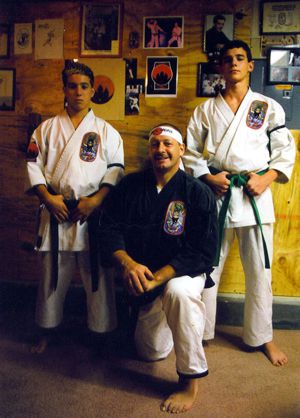 GM: First off, I want to say that I’m a huge fan of MMA. I think that what the Gracie’s did with the UFC woke up the martial arts world and changed it forever. That and Bruce Lee’s past contribution to the martial arts world are going to shape the future. MMA certainly brought the awareness of BJJ and ground fighting to the martial arts. It’s gotten to the point now where everyone trains in everything. One thing that is not good and looks very sloppy, is guys who start to fight MMA with little experience in ANY art. An example would be someone who has less than a year of BJJ, a couple years wrestling, and has done less than a year of stand-up striking, and all of a sudden they try to make a career in MMA. You have to dedicate yourself in each style of study to truly be effective in MMA. You can’t just throw a few techniques together from each style and go out and brawl and think you’re going to get somewhere. I see martial artists truly evolving into being combat athletes, where everything is taken into account (different styles, fitness, nutrition, injury prevention, strength and conditioning, etc). At the same time, individual styles will flourish for the people who enjoy just those styles, because they have different goals with their training. Not everyone wants to be a UFC champion.
GM: First off, I want to say that I’m a huge fan of MMA. I think that what the Gracie’s did with the UFC woke up the martial arts world and changed it forever. That and Bruce Lee’s past contribution to the martial arts world are going to shape the future. MMA certainly brought the awareness of BJJ and ground fighting to the martial arts. It’s gotten to the point now where everyone trains in everything. One thing that is not good and looks very sloppy, is guys who start to fight MMA with little experience in ANY art. An example would be someone who has less than a year of BJJ, a couple years wrestling, and has done less than a year of stand-up striking, and all of a sudden they try to make a career in MMA. You have to dedicate yourself in each style of study to truly be effective in MMA. You can’t just throw a few techniques together from each style and go out and brawl and think you’re going to get somewhere. I see martial artists truly evolving into being combat athletes, where everything is taken into account (different styles, fitness, nutrition, injury prevention, strength and conditioning, etc). At the same time, individual styles will flourish for the people who enjoy just those styles, because they have different goals with their training. Not everyone wants to be a UFC champion.
What are some of the things you are the most proud of throughout your martial art career?
GM: Being inducted in the Isshinryu Hall of Fame as the Adult competitor of the year in 2004. Receiving my Black Belt in the presence of Master McGrath. Being the assistant to Grand Master Ed McGrath and his students in teaching active duty US Marines hand to hand combat at the Marine base in Garden City, NY. Medaling at the US Open of Brazilian Jiu Jitsu in California in 2007. Being around such a tight group of masters in Isshinryu Karate under Ed McGrath. Being around great masters in BJJ like Grand Master Mansor and Milton Regis. And most of all I’m proud of the bonds that I have made on the deck and on the mat in ALL the styles that I have trained in.

To contact Daniel Vena and Ed McGrath’s School Of Isshin Ryu Karatedo And Kobudo visit their listing on the Martial Arts Schools and Businesses Directory by clicking on the image on the left.

